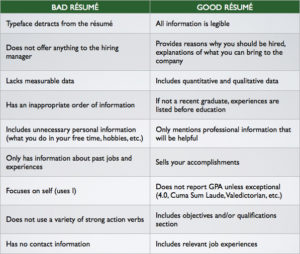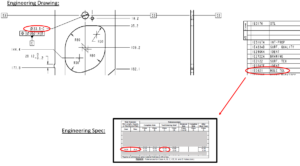In college I listened to a Ted Talk by a former teacher named, Rita Pierson. What she said in her Ted Talk moved me.
I have always been a relational person but her message emphasizes the value of relationships in our classrooms. Rita talks about how learning cannot happen when children aren’t sure if the teacher cares about them or not.
She says we ought to start with the simple things, like relationships.
However, relationships aren’t a small thing, and they are also not always simple to form or to help grow. They take time, commitment, and sacrifice. As teachers we get hyper-focused on pushing curriculum or preparing our kids for tests instead of remembering that ultimately the soft skills are what will really make them successful in the real world.
This summer while working at CAT I got to interview a lot of different employees. By asking them a consistent set of questions I was able to identify trends amongst them. One of the questions was, what skills do you think are critical in the workplace? Here are some answers listed anonymously below:
“Understanding the importance of building relationships.”
“Being able to communicate ideas and accept feedback.”
” Having People Skills- I grew up and was very shy and not extroverted, being in my line of work has improved my confidence I’m not as intimidated I now have the ability to talk to senior leaders and employees. This is important for my role.”
“Relationship building (First impression) and networking.”
“People and communication skills.”
The list goes on. Every single person I spoke with talked about the value of soft skills that stem from having and forming positive relationships in our classrooms. So as teachers we have two essential questions we must answer daily.
How do we create intentional space to build community in our classrooms?
How do we encourage students to develop skills around maintaining positive relationships?
Since every teacher’s situation is different I anticipate we all may have different answers to these same questions. I’m going to share a little bit more about how I create intentional space for community in my classroom as well as develop skills for maintaining positive relationships.
Beginning of the Year:
One thing that I do before the beginning of every school year is re-watch this video by Rita. It reminds me the kind of teacher I want to be.
- I want to be firm but fair.
- I want to give feedback not criticism.
- I want to express my emotion in a way that honors the person on the receiving end.
- I want to challenge my kids to be the best the can be.
- I want them to be lifelong learners.
- I want my students to walk out of my classroom as more mindful and responsive people than when they first walked in.
- I want my students to know that they are cared for in and out of school.
So far, I have successfully listed all the things that I want to achieve in a year. But it is also important that I get to know and understand what my students want to learn or feel in a year. I also think it is important that I provide opportunity for their voices to be heard in the classroom, if I hope to have a positive relationship with them.
At the beginning of the year. I set aside a large amount of time for conversations around how we as students and teachers will create safe spaces for learning? I typically begin the conversation by asking what the ideal student would look or sound like? Then I ask what the ideal teacher would sound or look like?
From that we are able to generate a list of norms for behavior. I think that their buy in for class norms is important! Notice I said norms and not rules. Rules typically come from top down (teacher to student), where as norms are what we can normally expect from each other (both teacher and student) that we spend time with on a day to day basis.
This has been a fruitful way to start the year and helps as the year progresses to hold students accountable because they themselves had buy in, in how they expect each other to behave and respond in the classroom.
But having norms isn’t enough. Having relationships is about vulnerability, openness, failure, and as I listed before about time, commitment, and sacrifice.
As teachers we walk a thin line for what vulnerability looks like but I have tried to take some of the valuable wisdom I have received from over the years and share it with my students.
A poem that I heard when I was 14 years old by Peter Dale Wimbrow Sr has developed in my heart and mind as a poem that can guide my actions and relationships.
As I read this I think about developing authentic and genuine relationships with each of my students. I think about calling them to live lives of integrity and ingenuity. I think about working with students who understand that trials will come their way and staying true to themselves is their key focus.
When I build relationships I want them to be real and lasting and the best way to do that is to encourage others to be their authentic selves.
During the Year:
Daily morning meeting have really helped to grow and maintain relationships with students in my class. Everyday we greet one another. Acknowledgement is a big component of relationships. In this digital age it is nice to audibly hear hello and your name attached to it. It’s nice to shake hands and look someone else in the eye and say, “I’m glad you’re here today.” These little things matter. More than we realize most of the time.
Morning meeting has been a great way to share and get to know a smaller subset of students. Many teachers will work with more than 60+ students a day. But by setting aside this time with a small group of 18 students each day. I am able to deeply get to know those students and be a strong advocate and support system for them.
Morning meeting is also a space for students to address their day to day challenges. This is where I combat things like bullying, dishonesty, and distrust. It is also where we give affirmations, do team building, play board games, and talk about topics of interest.
Right now here is my daily schedule for morning meetings:
- Monday- Social Emotional Learning (ex- bullying, personal responsibility, honesty, integrity, and trust)
- Tuesday- Study significant figures in history most recently we talked about the Jubilee Singers and how they helped keep Fisk University in Nashville open. I try to choose people from different communities that students in my class can directly identify with. I back my conversations with some kind of supporting text.
- Wednesday- Board Games/Snap Circuits I use board games to facilitate play and collaboration. I like to play calm music in the background- kids are awesome with this especially when it’s part of their routine!
- Thursday- Group Challenge (Stem Challenges, Tarp Challenge, etc)
- Friday- we have a community K-5 Meeting
At the end of each meeting we stand in a circle and say H-U-A. I emphasize the importance of a circle because I want students to feel that we are all equal to each other and as a classroom we cannot function unless we are all doing our part, students and teachers alike. Once in that proper circle I or a student will say, “HUA stands for”… and the others will reply, “Heard, Understood, Acknowledged.” and then the leader will say, “1 HUA on the count of 3” and they all pump their fists in and out and say “HUA” really loud.
By taking 30 minutes out of my day, everyday I am able to instill so many important life lessons and set some good intentions for the day.
During the year I will also take pauses in the normal schedule and share other things I like. Sometimes we will even have extra recess with whole class games. Other times if I want to address something I will write them a whole class letter and read it to them and then have them respond in their class journals. There is also definitely a place for class karaoke or dance parties. Here is an example of something sentimental I like to share with my students each year: exploris_elementary_student_roles
End of Year
At the end of the year I ask each one of my students to write a letter to all of their classmates (the 18 in morning meeting). Every student will receive 18 letters saying what that person meant to them. They walk away with a book at the end of the year saying what they meant to each other. This activity has always been very affirming and positive. It solidifies the relationships that have been built throughout the year.
I love having these little traditions and I know I am not the only teacher that cares about fostering positive relationships so I know there are SO many more epicly cool things I could do in my classroom to make my kids feel loved and supported. I think at the end of the day I will always feel I could have done more, but do you know what I think my students see everyday?
I think they see whether or not you tried your best to be your best that day.
Relationships matter because they are the building blocks to everything else we will do in life. Even if we feel our relationship with our students is short (a semester or a year), we still have have students for a season of their lives!
Let’s make that time count. Because you could be the teacher that changes everything for them.
Makes them see themselves in a whole new way. Makes them think they can when no one else does. We have to focus on the simple things, relationships as Rita says. No matter how much time, commitment, and sacrifice it takes.
I promise you when a student is struggling the relationship is what will help you and them through that time.
Be the Change,
Ms. A


